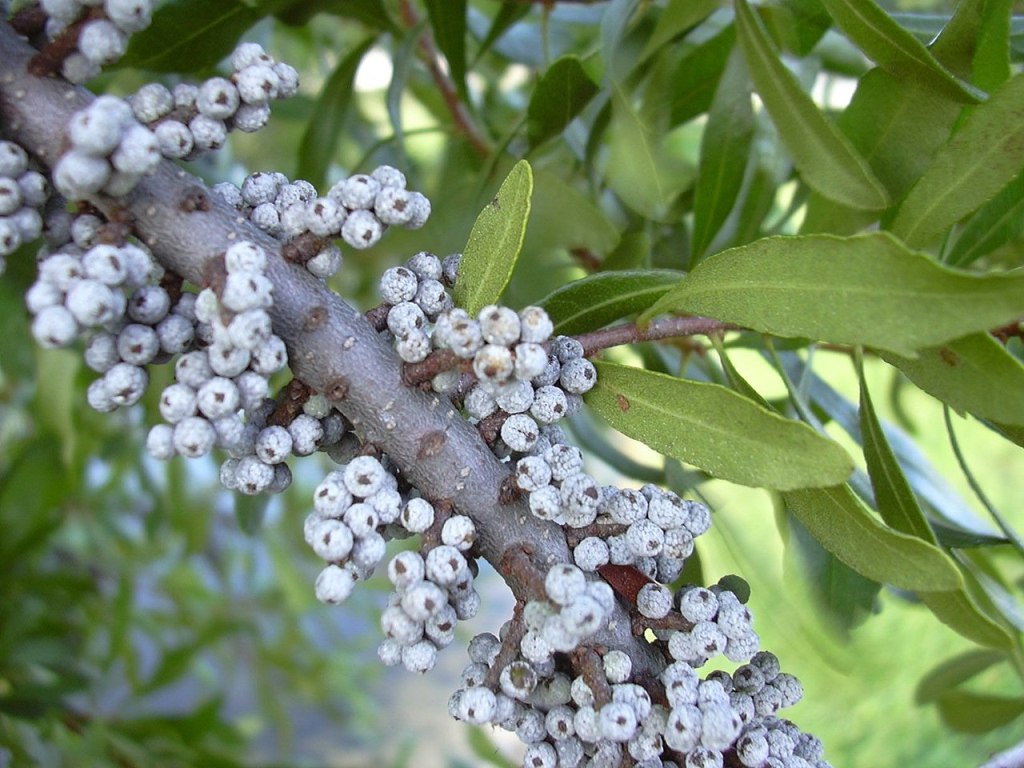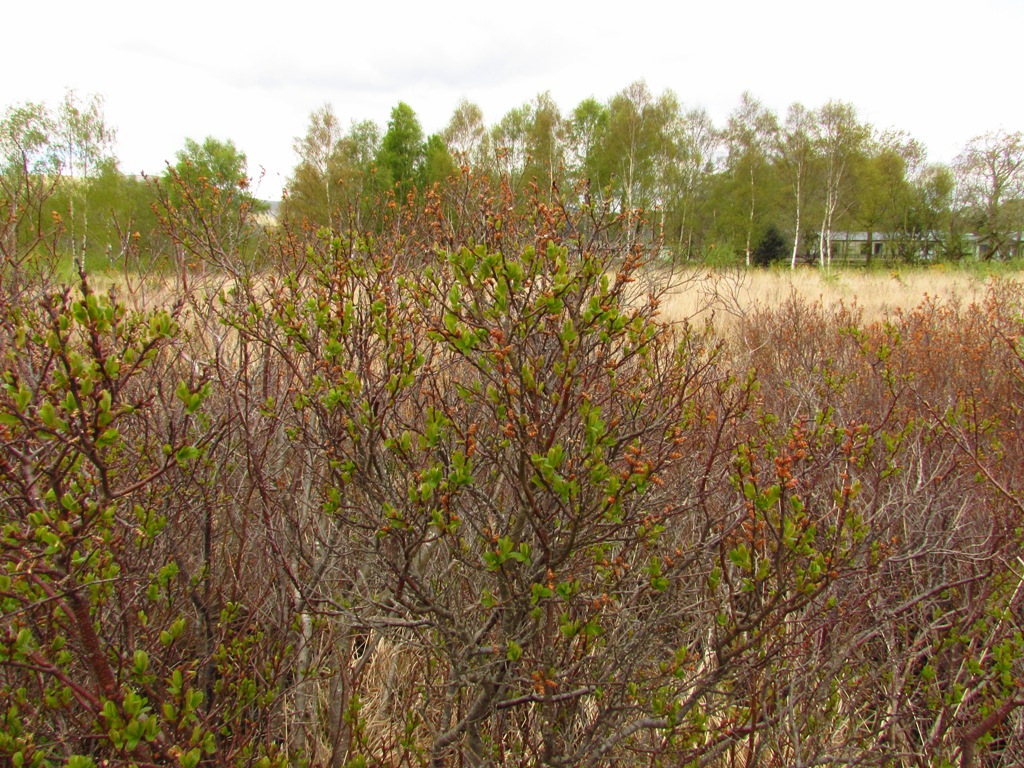
Myrica gale or the Bog-myrtle, Sweet willow, Dutch myrtle, and Sweetgale which are its other common names is a fascinating plant in the Myricaceae family.
This is the only native species of this family, but there occurs one other introduced species in the British Isles:
M. pensylvanica or Bayberry is an introduced species from E.N. America and is also naturalized in a few places in the B.I.
Pictures are by Matt Summers and information + pictures mainly from Wikipedia. The links on the scientific name take you to the Plant Atlas Online 2000. The link on the Common Name is mainly from Wikipedia.
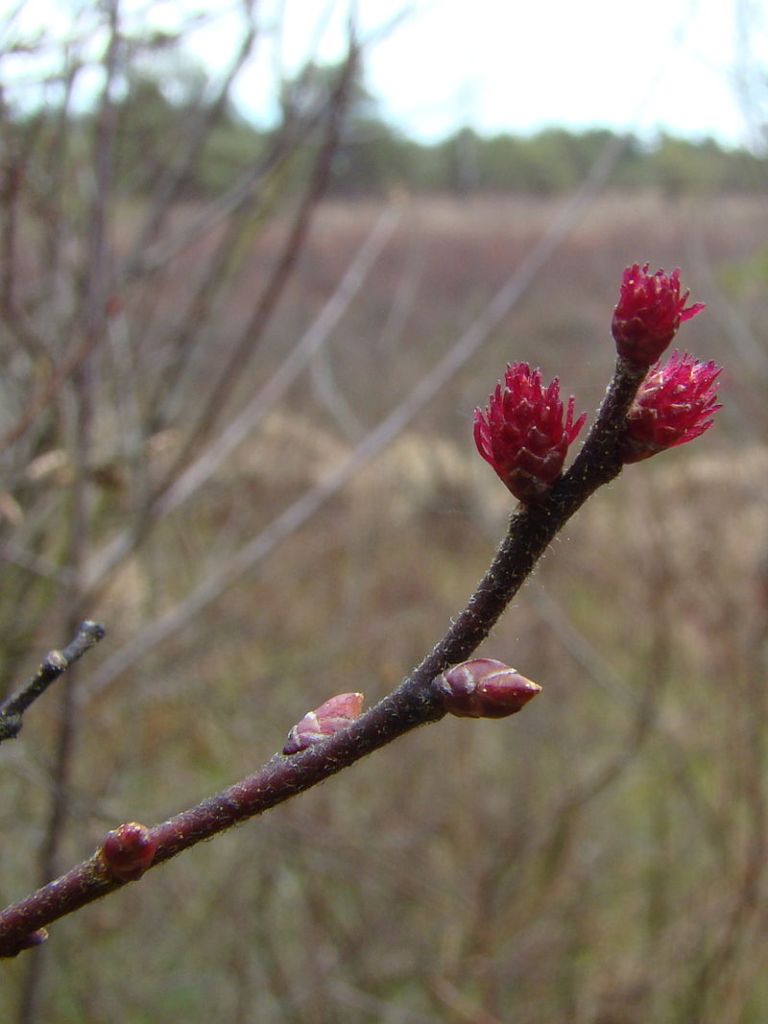
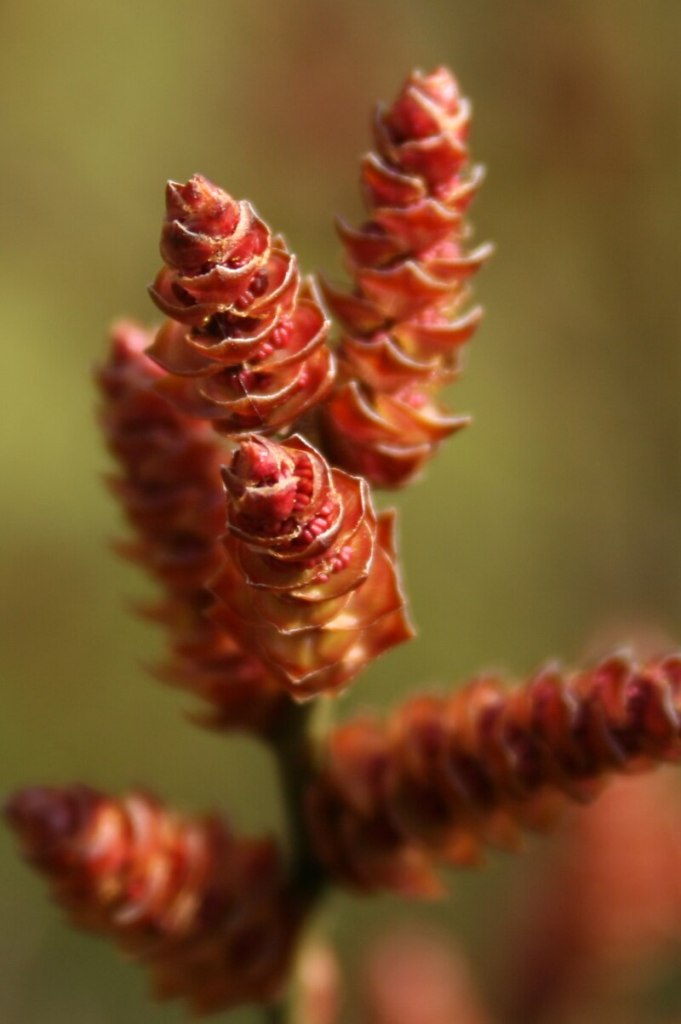
Myrica gale or Bog-myrtle
A small shrub which suckers to form dense thickets. It grows in organic soils in base-poor bogs and moorland, lowland raised bogs, wet heaths and acid carr; in all its sites, moving groundwater is a constant feature. It tolerates light shade and is not grazed.
To cope with the difficult nitrogen-poor growing conditions, the roots have nitrogen-fixing actinobacteria which enable the plants to grow.
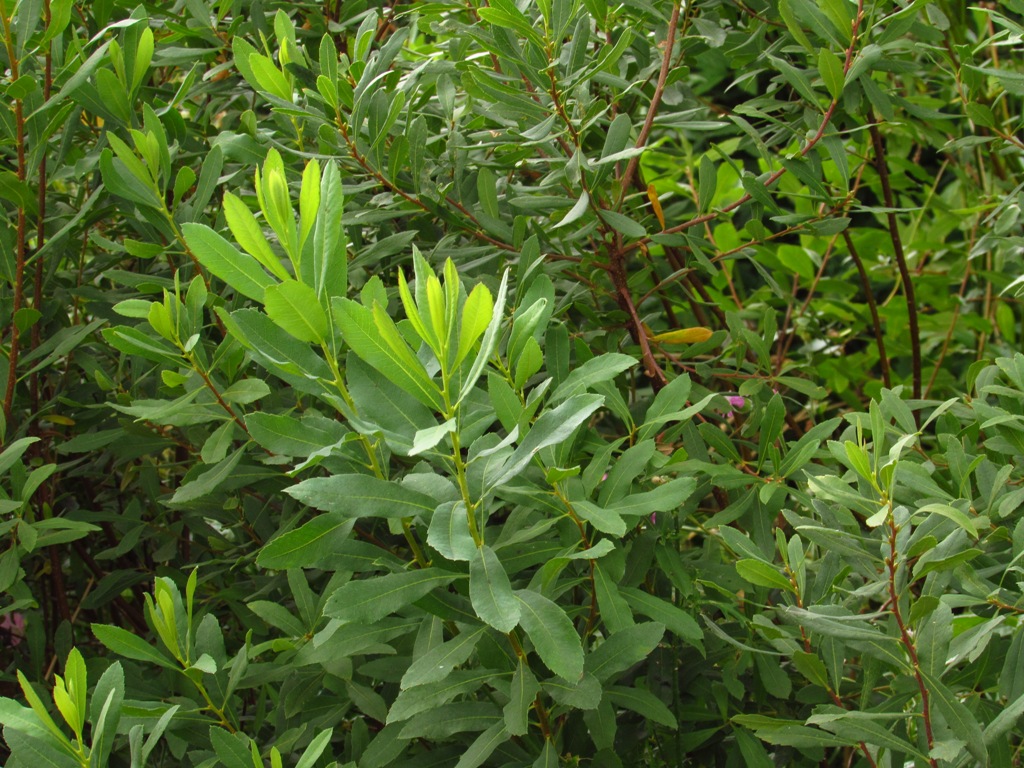
The foliage has a sweet resinous scent and is a traditional insect repellent, used by campers to keep biting insects out of tents. It is also a traditional component of royal wedding bouquets and is used variously in perfumery and as a condiment.
In Scotland, it has been traditionally used to ward off the Highland midge, and it is marketed as an insect repellent and as an ingredient in some soaps.
Queen Victoria was given a sprig of bog-myrtle which she planted on the Isle of Wight. Her daughter used some of the plant that grew in her wedding bouquet, starting a royal tradition.
Uses as food and medicine according to Wikipedia:
The leaves can be dried to make tea, and both the nutlets and dried leaves can be used to make a seasoning.
In north-western Europe (Germany, Belgium and the Netherlands), it was much used in a mixture called gruit as a flavouring for beer from the Middle Ages to the 16th century, but it fell into disuse after hops supplanted gruit herbs for political and economic reasons.
In modern times, some brewers have revisited this historic technique and in Denmark and Sweden the plant is commonly used to prepare home-flavoured schnaps.
In some native cultures in Eastern Canada, the plant has been used as a traditional remedy for stomach aches, fever, bronchial ailments, and liver problems.”The Creole Doctor”, an 1886 article by Lafcadio Hearn, discusses the uses of the plant, known locally as “cirier batard,” in Louisiana creole folk remedies.
In 2007 there were plans to increase production of the plant in Scotland for use as an essential oil for treating sensitive skin and acne. The plant has been listed as an abortifacient and therefore should not be consumed by women who are, or might be, pregnant!
see also a short video here.
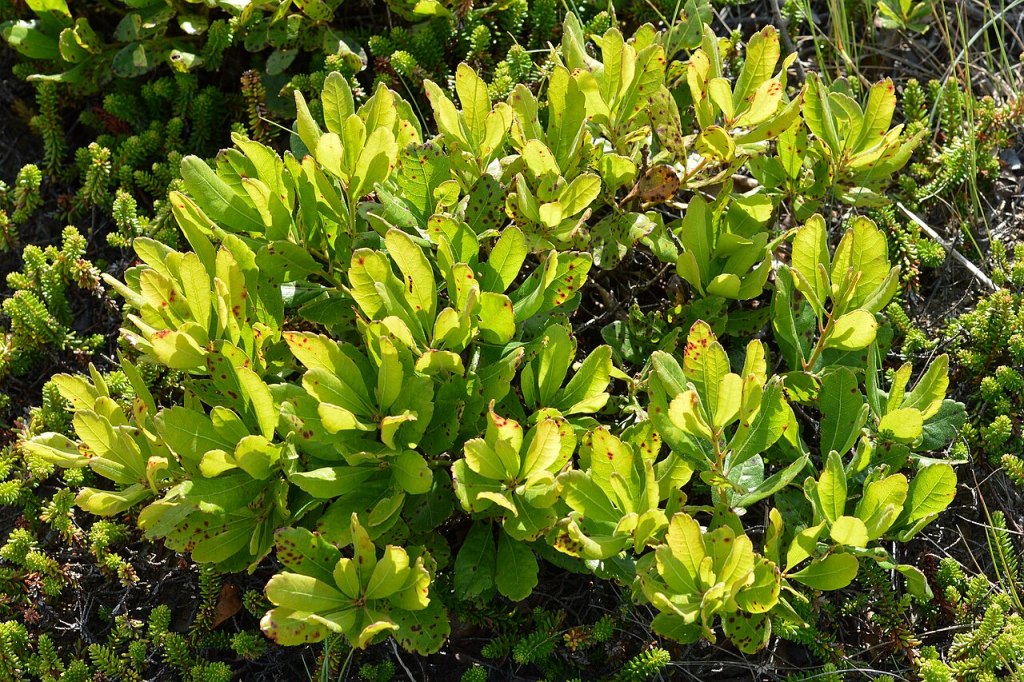
M. pensylvanica or Bayberry
A small, deciduous shrub, occasionally planted for cover. It is naturalized on heathland and in wet woodland. Reproduction is by seed and suckering.
M. pensylvanica, which has been cultivated in Britain since 1699, was first recorded in the wild in 1934 at Wilverley (South Hampshire), where it originated as a bird-sown garden escape.
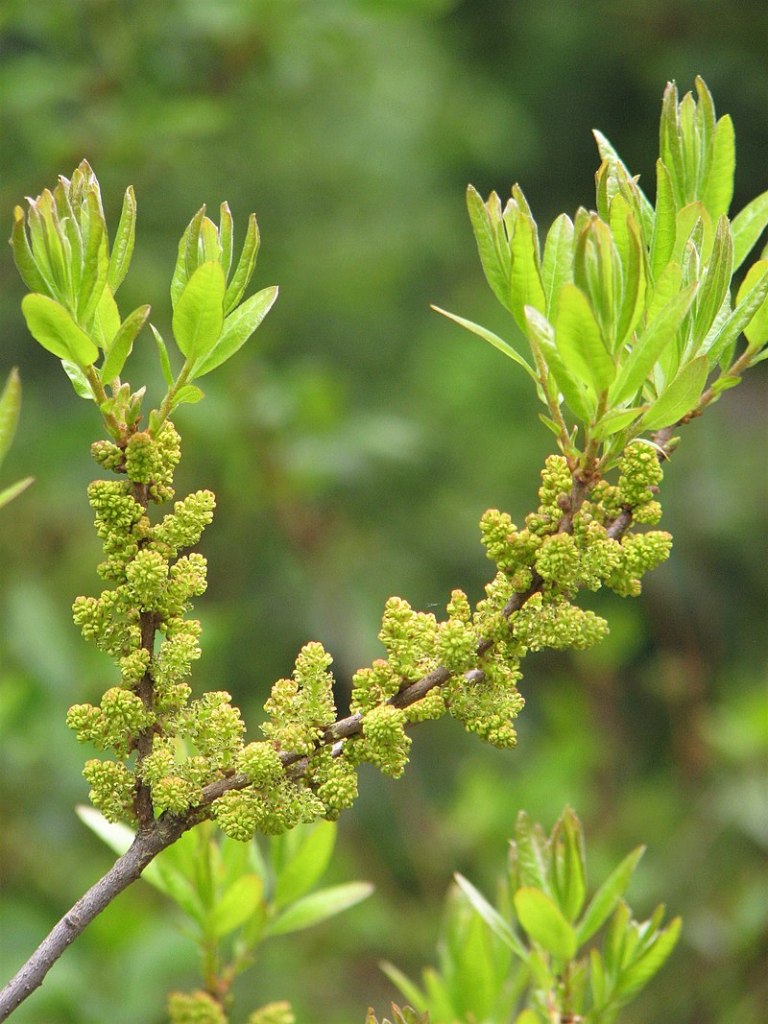
M. pensylvanica or Bayberry male flowers above (by Agnieszka Kwiecień in Wikipedia) and berries on the plant below (by Forest & Kim Starr in Wikipedia)
